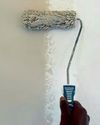
If you are frequently in a workshop, you're likely exposed to many risks. Workshops are hazardous environments both by nature and the activities people carry out in them. Therefore, it's essential that you're aware of these hazards and how to protect your health and safety. This article outlines common workshop hazards and control measures that you can take to reduce them.
What are the most common workshop hazards?
There are many jobs associated with workshops, such as carpentry, welding, and paint spraying. Each role comes with different hazards and can make workshops dangerous places to occupy.
The top 15 workshop hazards are:
• Lack of guards or screens on equipment or around dangerous areas.
• Damaged or misused guards.
• Lack of adequate ventilation and temperature.
• No safety signs, outdated safety signs, and broken safety signs.
• Machinery left unattended while in use.
• Obstructions - of fire exits, cut-out switches, etc.
• Cluttered workstations.
• Trailing wires and cables.
• Chemical substances in unmarked containers.
• Chemical splashes.
• Incorrect tools used for tasks.
• Confined spaces.
• Electric shocks, burns, or fires.
• Lone working.
• Sharp items.
How to reduce hazards in your workshop
Workshops are clearly dangerous environments and so you should do all you can to reduce the level of risk. Often, you can easily reduce risks through a few small steps, some of which we've outlined below.
Denne historien er fra January/February 2023-utgaven av The Home Handyman.
Start din 7-dagers gratis prøveperiode på Magzter GOLD for å få tilgang til tusenvis av utvalgte premiumhistorier og 9000+ magasiner og aviser.
Allerede abonnent ? Logg på
Denne historien er fra January/February 2023-utgaven av The Home Handyman.
Start din 7-dagers gratis prøveperiode på Magzter GOLD for å få tilgang til tusenvis av utvalgte premiumhistorier og 9000+ magasiner og aviser.
Allerede abonnent? Logg på

SLEEP IN STYLE
This queen bed has a low profile yet it still has some unique design aspects. I used a hardwood and that made this project a little more difficult, but overall, I'm happy with how it turned out.

Paint roller tip for clean corners
When painting a room, I've found that wrapping a small sandwich bag around the roller's edge works wonders for clean corners.

Cable organiser using toilet paper rolls
Here's a clever little hack to keep your cables neat and tidy.

Metal cutting tools for home projects
I'm looking to get into metalworking and want to start with a few basic home projects, like making small furniture items and maybe even some sculptures.

Pleasurable plumbing
I just wanted to express my appreciation for your recent article on DIY plumbing fixes.

MAKE SOME NOISE!
Are you ready to embark on a musical adventure and create your very own drum kit from recycled materials? Get ready to unleash your creativity and make some noise with this fun and eco-friendly DIY project. Let’s dive into the step by-step guide and bring your mini band to life!

DIY HOME APPLIANCE REPAIR
From the whirring of the washing machine to the gentle hum of the refrigerator, our trusty home appliances keep our households running smoothly. But what happens when these essential gadgets start to falter?

EFFECTIVE METHODS FOR A PEST-FREE HOME
Pests, those unwelcome guests, can turn our homes into uncomfortable environments, disrupting our peace and posing health risks.

COMMON SEALANTS FOR DIY USE
By familiarising themselves with the diverse array of sealants available, mastering proper application techniques, and prioritising safety at every step, DIY'ers and homeowners in South Africa can tackle sealing projects with confidence and achieve lasting results that enhance the comfort, efficiency, and aesthetics of their homes.

UNLOCKING THE POWER OF ANGLE GRINDERS
In the world of DIY, few tools are as versatile and indispensable as the angle grinder. From cutting and grinding to polishing and sharpening, this powerhouse tool is a must have for any homeowner or DIY enthusiast.